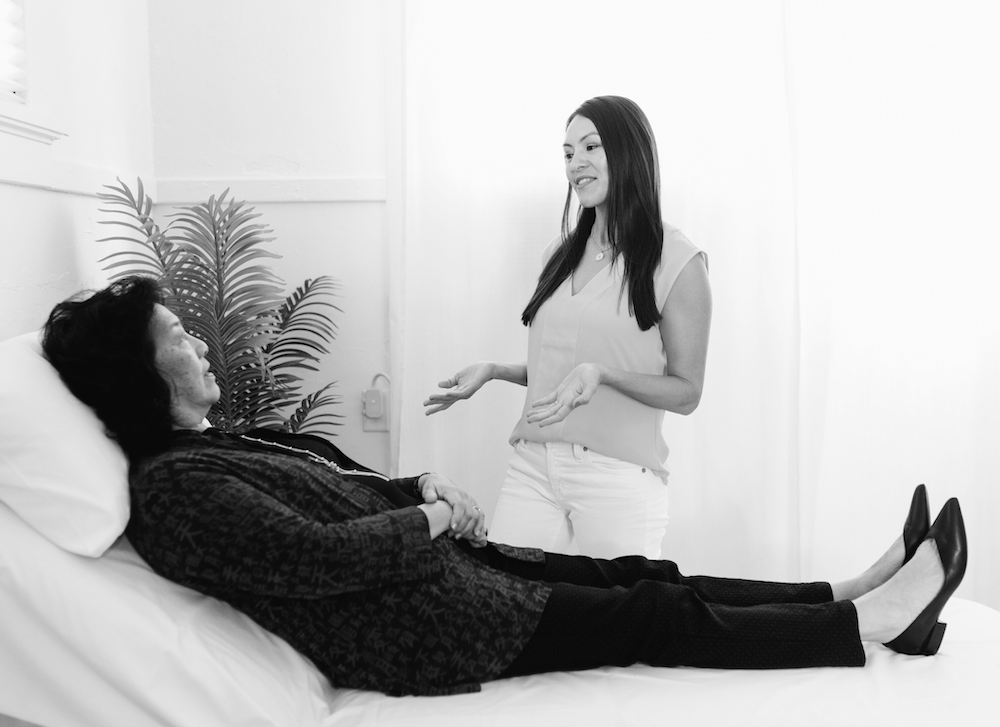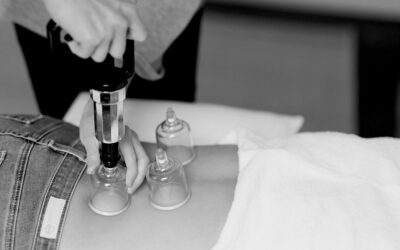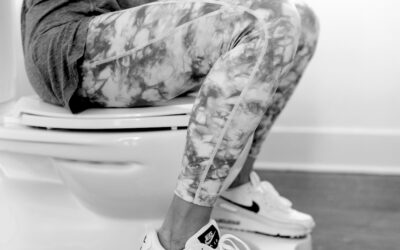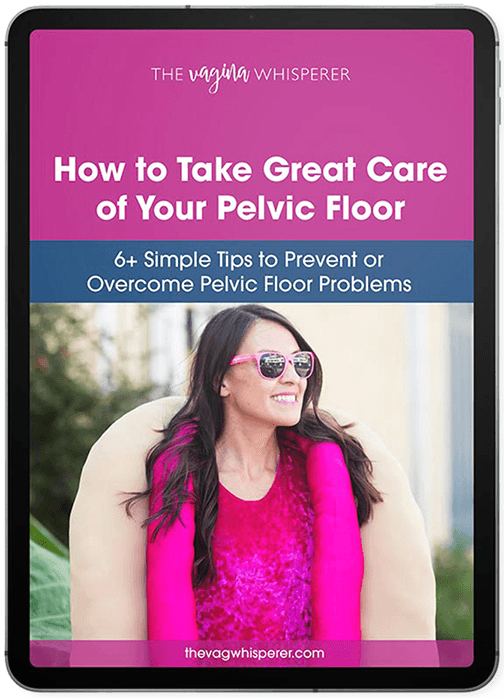You probably know that menopause presents a whole new set of changes in someone’s life. We discuss hot flashes, sleep issues, and mood swings – but did you know that there is a connection between menopause and pelvic floor dysfunction? Changes in hormones can lead to symptoms such as pain with sex, prolapse, leakage, and more. The good news is that there ARE things you can do to help alleviate these pelvic floor symptoms!
Menopause definitively starts when 12 consecutive months have passed since your menstrual cycle. Women usually go through menopause between 40-60, but perimenopause, the phase leading up to menopause, can begin years before.
How is Menopause and Pelvic Floor Dysfunction Related?
During perimenopause and menopause, an individual will experience a decrease in estrogen. Decreased estrogen levels are what causes menstrual cycles to become inconsistent and less frequent. It also affects both blood flow and lubrication of the muscles and tissues of the pelvic floor. Changes in your pelvic health include:
Treatment Options
Many individuals experience these psymptoms and fail to recognize that they are related to perimenopause or menopause. Understanding that hormone changes cause these symptoms can empower you to take action and make the transition easier.
Regular exercise and relaxation habits, including meditation and yoga, help decrease stress and improve sleep. Working with your doctor to balance or manage your hormones and relieve specific symptoms is important.
Common Symptoms
- Changes in pelvic floor muscle strength
- Vaginal dryness
- A decrease in sexual desire
- Incontinence
- Dramatic mood swings
- Difficulty sleeping
- Hair loss
- Weight gain
- Depression and anxiety
Urinary Incontinence
Many going through perimenopause or menopause experience incontinence because of a weakened pelvic floor. If you have incontinence, try these bladder tips:
- Stop drinking two hours before bed
- Do 5 kegels while in bed and perform 5 deep breaths to distract yourself
- Avoid bladder irritants at night (alcohol, coffee, caffeine)
- Pee before getting into bed
Sexual Function
Decreased estrogen levels, along with increased stress and lack of sleep, can decrease one’s sexual desire. This is totally normal. Low estrogen levels make vaginal tissues thin and dry, causing pain, a raw feeling, or mild bleeding during sex.
Experts recommend using water-soluble lubricants for sexual activity and intercourse to minimize friction and enhance pleasure. Your medical provider may also recommend a topical hormone replacement to “plump” up the vaginal tissues. Increased pleasure may also help increase sexual desire.
How Estrogen Affects the Pelvic Floor
You may experience cold sweats and chills because of your drop in estrogen levels during menopause. Low estrogen levels also mean a dry vagina. When vaginal tissue is thin and dry, it is more prone to tearing which is why you may experience mild bleeding with intercourse. Lower estrogen levels also link to a lower libido, which means you may experience a low sex drive.
- Decreased estrogen levels during perimenopause and menopause contributes to:
- Decreased lubrication
- Less vaginal discharge
- Dryness of vulvar and vaginal tissues
- These things cause painful sex, bleeding during sex, irritation of vulvo-vaginal tissues, and increased bacterial infections (fun, right?!).
Our number one tip to combat this is to moisturize. Using natural, hormone free moisturizers like coconut oil, vitamin E oil, or all-natural balms can help with dryness.
You should also look for a water-soluble lubricant for intercourse (slippery stuff is my fave). You can use these all-natural moisturizers inside your labia, at your vaginal opening, and inside the vaginal canal. Use nightly (or as often as you like) to help soothe sensitive tissues.
Pelvic Floor Exercises for Menopause
If you have pelvic pain or pressure during perimenopause or menopause, you should start an exercise routine. Movement will help. If you aren’t active already, start simple with a walk, jog or yoga class.
That being said, the number one pelvic floor muscle exercise prescribed for menopause is likely kegels. Check with a pelvic floor PT to be sure kegels and pelvic floor strengthening is what you need.
To recap, below are my top tips to relieve pelvic pain during menopause. Reach out or schedule an online consult if you have any questions.
- Perform pelvic floor muscle exercises such as kegels
- Work to “train” your bladder
- Avoid bladder irritants and take care not to drink too much water (but stay hydrated)
- Start an exercise routine
Is Pelvic Floor PT Needed for Menopause?
Pelvic floor physical therapists treat the muscles and tissue in the pelvic region, which affect bowel, bladder, and sexual health.
We also specialize in treating folks experiencing the symptoms of perimenopause or menopause by:
- Working to strengthen the pelvic floor muscles
- Improving the elasticity of the vagina to minimize pain and tearing with intercourse
- Helping prevent bladder leaks that increase with aging.
Working with a pelvic floor physical therapist can be extremely beneficial in alleviating symptoms.
We often do not discuss the extremely intimate pelvic floor changes we experience with menopause. Know you are not alone, and there is help available! It’s never too late to talk with your medical provider or to work with a pelvic floor physical therapist if you are experiencing any of these symptoms.
___________________________________________________________________________________________
Interested in more tips on how to prevent or overcome Pelvic Floor Problems?
Download this free guide for some simple, do-able, totally-not-weird tips to take better care of your down there.
___________________________________________________________________________________________
Some links may be affiliate links. The products we recommend are products we use or recommend to clients.





